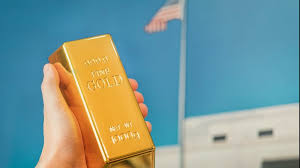
Breaking News
Reverse Repos Collapse Continues: What $91B at the Fed Is Really Telling Us
 Avoid Dialysis: Top 8 Natural Drinks to Cleanse and Protect Your Kidneys
Avoid Dialysis: Top 8 Natural Drinks to Cleanse and Protect Your Kidneys
 Groundbreaking cancer treatment which 'destroys tumours with sound' to be rolled out on NHS
Groundbreaking cancer treatment which 'destroys tumours with sound' to be rolled out on NHS
 Supreme Court Lifts Injunction on Trump Education Cuts
Supreme Court Lifts Injunction on Trump Education Cuts
Top Tech News
 3D printing set to slash nuclear plant build times & costs
3D printing set to slash nuclear plant build times & costs
 You can design the wheels for NASA's next moon vehicle with the 'Rock and Roll Challenge
You can design the wheels for NASA's next moon vehicle with the 'Rock and Roll Challenge
 'Robot skin' beats human reflexes, transforms grip with fabric-powered touch
'Robot skin' beats human reflexes, transforms grip with fabric-powered touch
 World's first nuclear fusion plant being built in US to power Microsoft data centers
World's first nuclear fusion plant being built in US to power Microsoft data centers
 The mitochondria are more than just the "powerhouse of the cell" – they initiate immune...
The mitochondria are more than just the "powerhouse of the cell" – they initiate immune...
 Historic Aviation Engine Advance to Unlock Hypersonic Mach 10 Planes
Historic Aviation Engine Advance to Unlock Hypersonic Mach 10 Planes
 OpenAI CEO Sam Altman Pitches Eyeball-Scanning World ID to Bankers
OpenAI CEO Sam Altman Pitches Eyeball-Scanning World ID to Bankers
 New 3D-printed titanium alloy is stronger and cheaper than ever before
New 3D-printed titanium alloy is stronger and cheaper than ever before
 What is Unitree's new $6,000 humanoid robot good for?
What is Unitree's new $6,000 humanoid robot good for?
 "No CGI, No AI, Pure Engineering": Watch Raw Footage Of 'Star Wars'-Style Speeder
"No CGI, No AI, Pure Engineering": Watch Raw Footage Of 'Star Wars'-Style Speeder
Federal Reserve Paper Ponders Revaluing Gold Reserves To Market Price

On Friday the Federal Reserve Bank website published a "FED Notes" article by Colin Weiss regarding the theory and phenomenon of central banks revaluing their gold reserves in order to increase nominal wealth without increasing debt from the printing of debt-based fiat currencies.
"With public debt at high levels, some governments have begun to explore financing additional expenditures without raising taxes while also not increasing public debt outstanding. One possibility is using proceeds from valuation gains on gold reserves, as has been floated in the U.S. and Belgium recently," the paper said.
The government of the U.S. holds 261.5 million troy ounces of gold, according to the paper. Currently the government proclaims a statutory price of $42.22 per troy ounce for the valuation of this precious metal, or about 1.25 percent the current market value per ounce as of the writing of this article – $3,379.40



